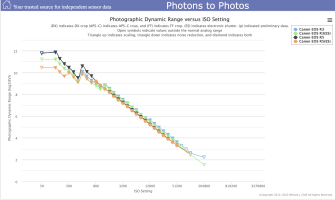I also think that many features are overrated in their usefulness and rarely pose a problem. I think it's good that this problem now appears to have been solved.
It's like all news. Be it IBIS, BSI sensor, special autofocus modes, etc., Canon will also position itself towards global shutter. I would even argue that the R1, as the crowning achievement of Canon's new DSLM technology, will include all of these features and a few more.
Personally, the overall package is much more important to me than the individual feature. This includes a well-thought-out user interface. Ergonomics is particularly important. A body that can accommodate larger lenses must fit well in the hand and remain operable without barriers. Canon once pioneered this and has also found a good balance between size, shape and weight. Sony hasn't always been very happy with the form.
Their sensor has always been sensational and Sony always surprises the photography world. This time the long-awaited global shutter. Given the hype surrounding it, how often the general photographer is actually confronted with the rolling shutter problem seems to happen very often. I've only had a handful of problem pictures myself so far. Well-known photographers don't have much more. But owning a camera with a global shutter certainly looks good in the imagination and without a doubt enhances the photographer - at least in one's own perception.

